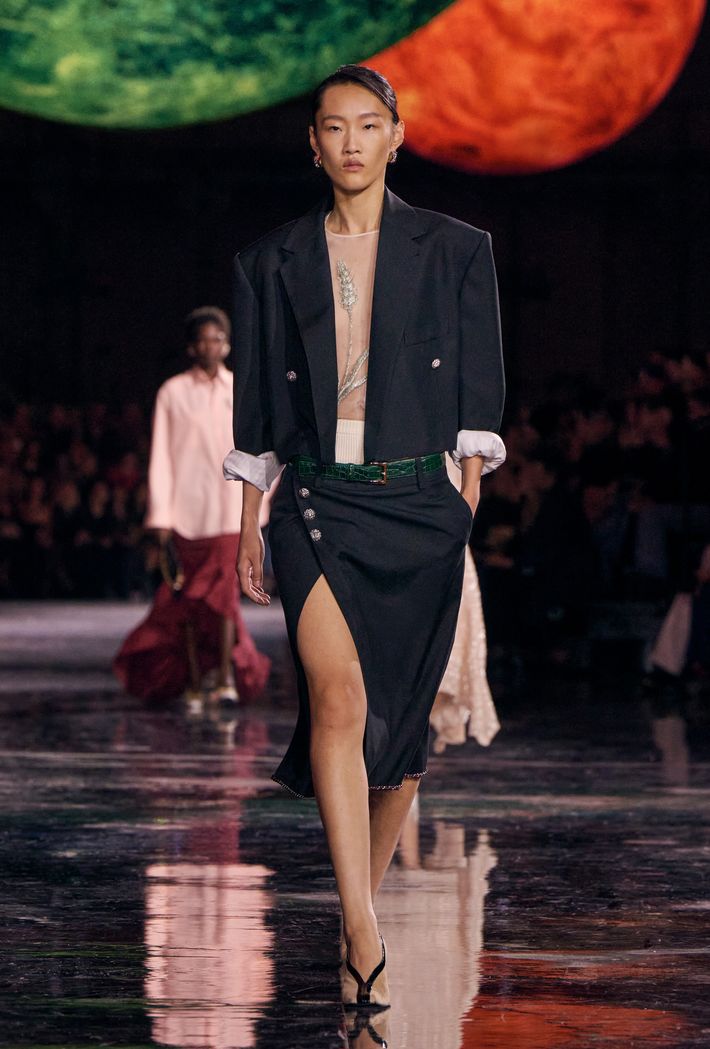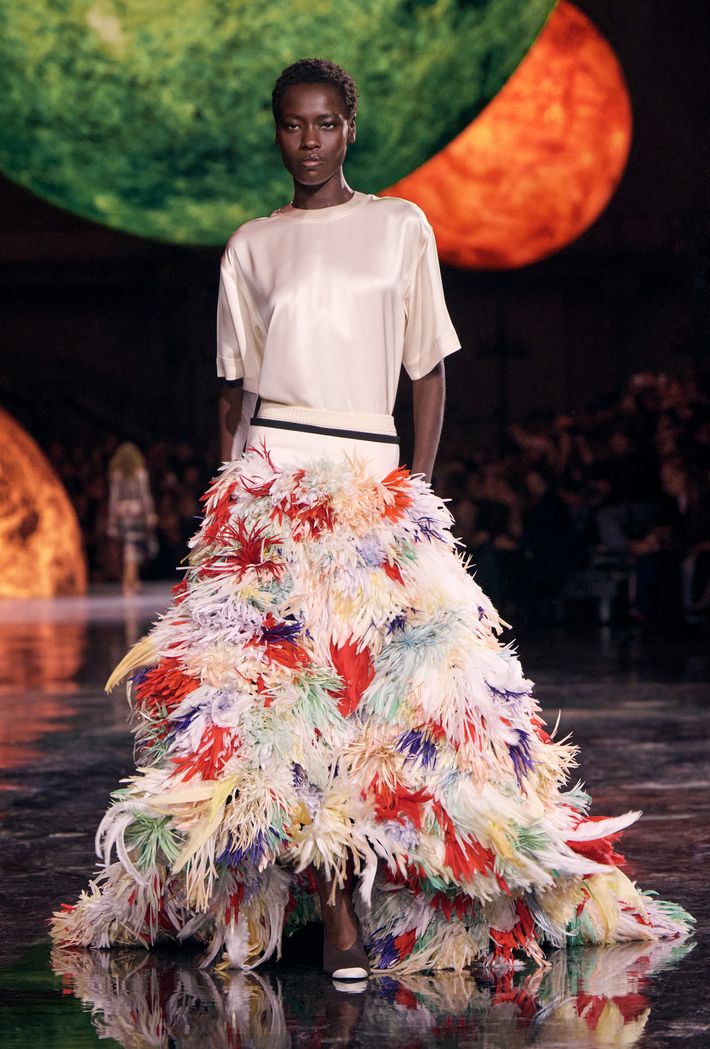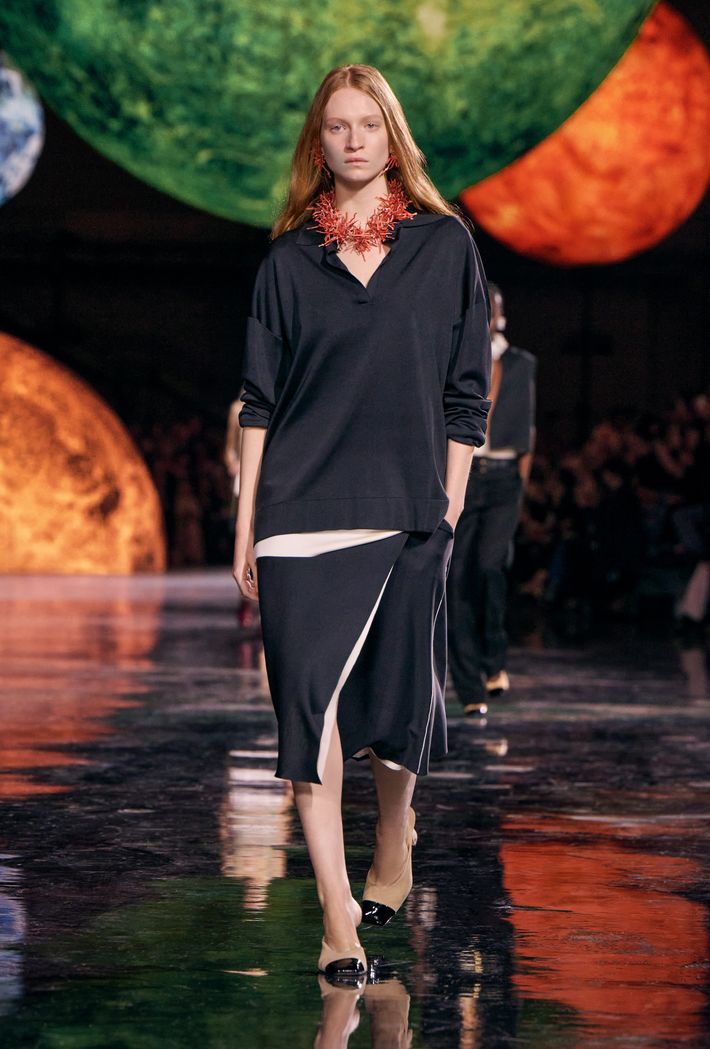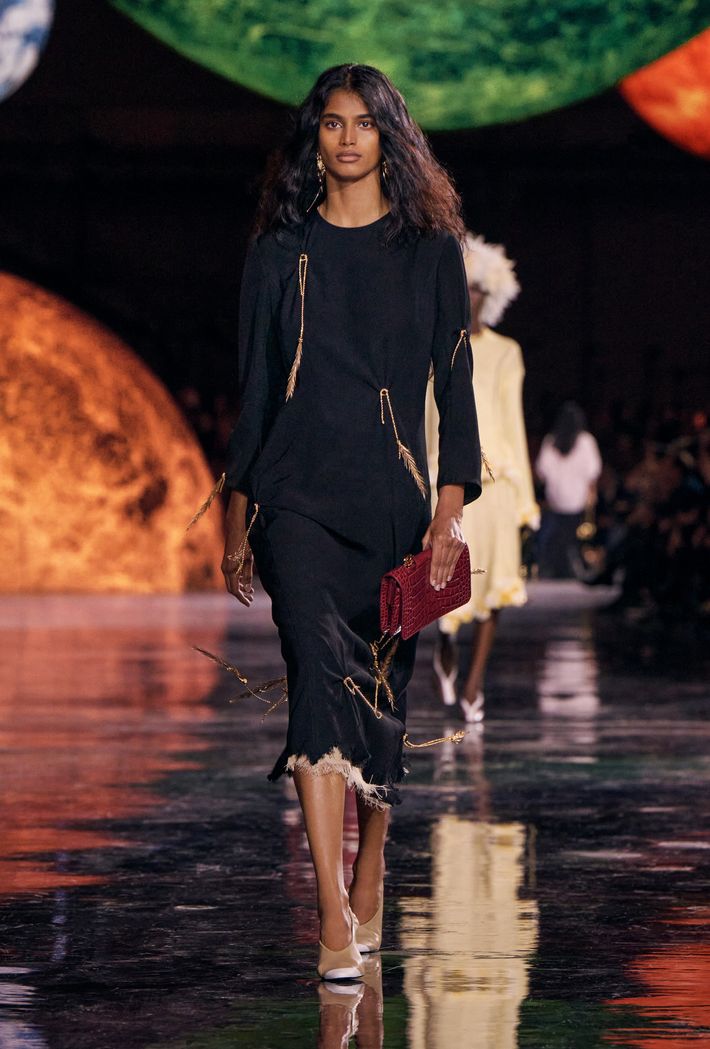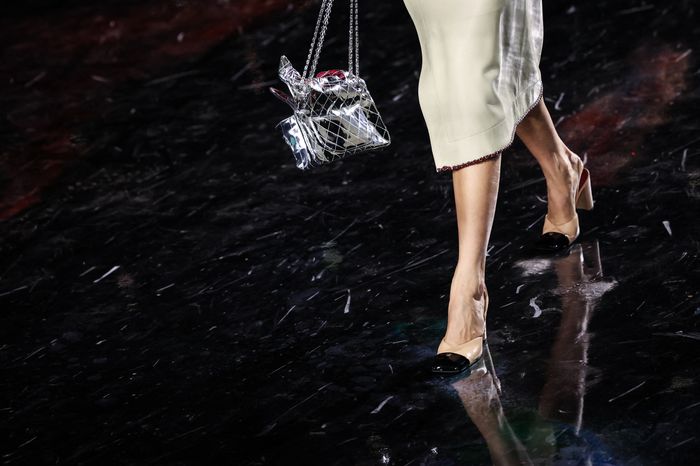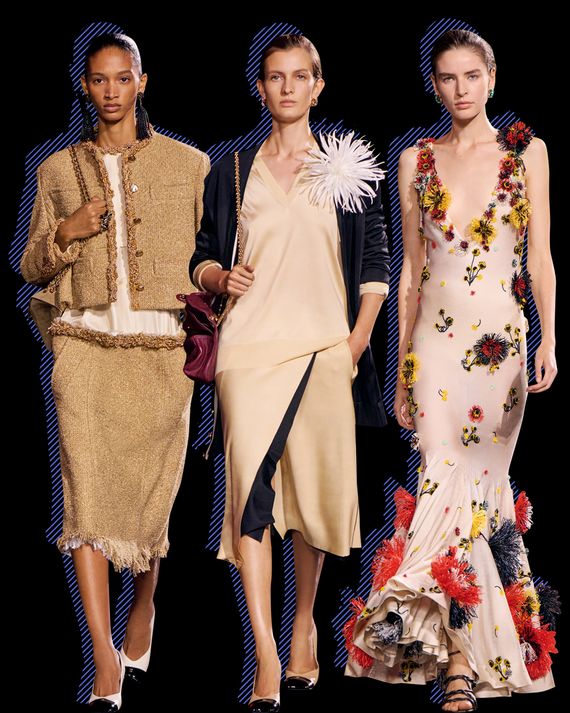
Photo-Illustration: by The Cut; Photos: Courtesy of Chanel
A young man born in Paris decides to become a fashion designer and studies in Brussels. He enters various juried contests that bring him to the attention of people in the industry. He interns and later holds key design posts at Maison Margiela, Celine, then Calvin Klein, which fired him. He finds himself standing on a street in Manhattan with a box of his belongings as if in a movie. Eventually, he becomes creative director of Bottega Veneta, the Milan luxury brand, where he achieves modest renown for his flourishes in leather and knitwear.
On Monday night, the man, Matthieu Blazy, now 41, entered the Grand Palais from the wings, trotted to the center, where he embraced the model Awar Odhiang, then made a deep bow as Chanel’s new creative director while 2,000 people stood in rapturous applause. Undoubtedly, over the previous 20 minutes or so, they had understood they were privy to a Chanel they had never seen before.
For Blazy, it has been quite a journey and, more pertinently, a journey of discovery into the world of Gabrielle Chanel, which began early in the 20th century. To me, the show — on a set with a specially poured floor in streaky deep blue and a dozen glowing planets suspended above our heads — it felt as though we were space-time travelers, seeing things about Chanel that were new but also set in a much larger context.
In many, many ways — all of them as clear as glass — Blazy has made Chanel a brand of the 21st century and, in the process, has left behind all its rivals with the exception of Hermès. In designing clothes that are not about youth or cool or some topical discussion primed for social media, he has significantly widened the frame of fashion. Many brands this season, in hindsight, took a decidedly small-picture view, often focused on a conceptual idea that tended to be lost in translation or tried boringly hard to be relevant. Blazy’s models strode across the celestial floor in a variety of suits with easy, side-split skirts set just below the waist and shifts that combined the top and skirt with a matching jacket that were languorous on the body, visibly light in weight, and so unlike the boxy Chanel fit of recent years as to be almost unidentifiable — something new in fashion.
Photo: Courtesy of Chanel
Perhaps the most important thing Blazy did was to recognize Chanel’s universality. It means more than Paris couture. He demonstrated this throughout the show with a more open and flexible attitude about dressing but specifically in the final section of three. He related how he found, in the Chanel archive, a randomly striped suit in deep red and green with flecks of black and yellow from 1964.
“It’s my favorite from the whole archive,” he said. “It’s funny, because it’s a suit you never see in exhibitions. It’s about a story that was lost. And you realize very quickly that what Karl [Lagerfeld] did was really his own take on Chanel. But when I saw that suit, I didn’t know what I was looking at. Did it look Basque? African, from the Masai? Southeast Asian? There was something so universal about it. I thought, You know what? Let’s go all the way with it. Let’s explore Chanel around the world, not just think about the Chanel woman.”
That led Blazy to create an evening look with a slim, below-the-knee skirt in rusty-brown tweed with a thickly fringed hem and an earth-red shell top embroidered with black and bone-white quills; a semi-sheer suit in a subtly blown-up plaid of red, orange, and yellow; and Odhiang’s flowing ball skirt embroidered with jazzy, spiky flowers and worn with a plain off-white silk T-shirt. Blazy said the flowers were a Flemish touch. In the studio, though, they refer to the skirt as “piña colada.”
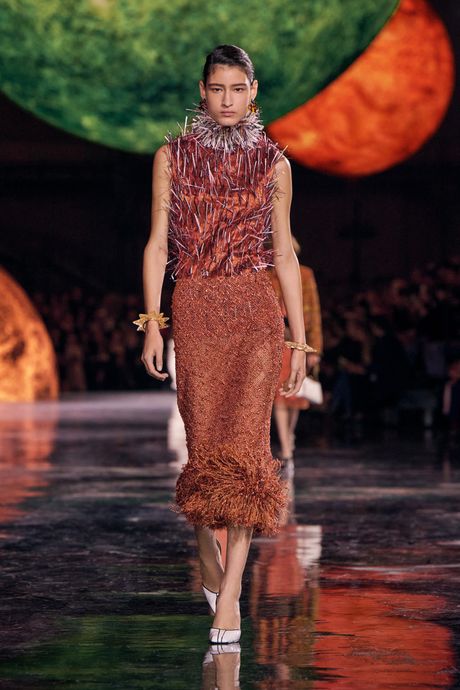
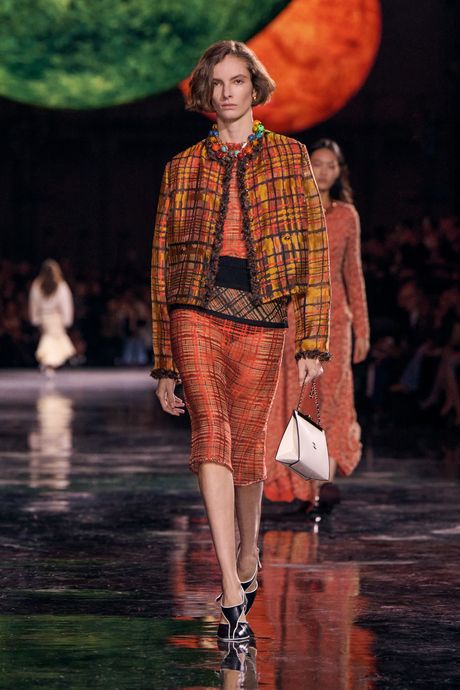
From left: Photo: Courtesy of ChanelPhoto: Courtesy of Chanel
From top: Photo: Courtesy of ChanelPhoto: Courtesy of Chanel
Photo: Courtesy of Chanel
Not long ago, a teacher and writer I know remarked that fashion brands are thinking too locally despite having a global audience. “Chanel is like the papacy,” he said. “It has roots everywhere in the world.” Blazy has acknowledged that effortlessly. It’s another door he has opened for Chanel and into Chanel. Other houses, notably Dior, should take a page from Blazy in this and other respects. Paradoxically, Chanel herself rarely traveled beyond Europe. She spent some time in New York and in Los Angeles for movie work. And she wasn’t a great reader, according to a well-known 1931 profile of her by Janet Flanner in The New Yorker. But she had a curious mind, an extraordinary circle of friends in high and low places, and, most important, uncanny instincts about her time that produced influential fashion.
Most people most know the brand only through Lagerfeld’s work and that of his successor and former right-hand, Virginie Viard, who followed his lead. In all, that’s more than four decades of one person’s vision. Blazy unpacked Chanel by going to the source, to the singular Coco Chanel, who invented herself. He said he began in the archive but soon found himself a little overwhelmed.
“So I stopped going there and I started to read,” he said. In addition to images of Chanel in men’s trousers and white shirts — at a time when pants were still taboo for women — he found a quote that, in effect, went: “There’s time for work and there’s time for love.” She borrowed heavily from the style of her lovers, among them Arthur “Boy” Capel, whom she met shortly before the First World War, and the Duke of Westminster.
Those relationships and images inspired the first segment of the show: men’s suit coats, including some in special crisp tweeds by William Halstead, a mill in the north of England (“It’s my favorite mill in the world,” said Blazy), which he sliced off to Chanel’s jacket proportion and put with trousers. Blazy also worked with Charvet, around the corner from Chanel, to produce a white cotton evening shirt — for day or night. Chanel herself shopped at Charvet.
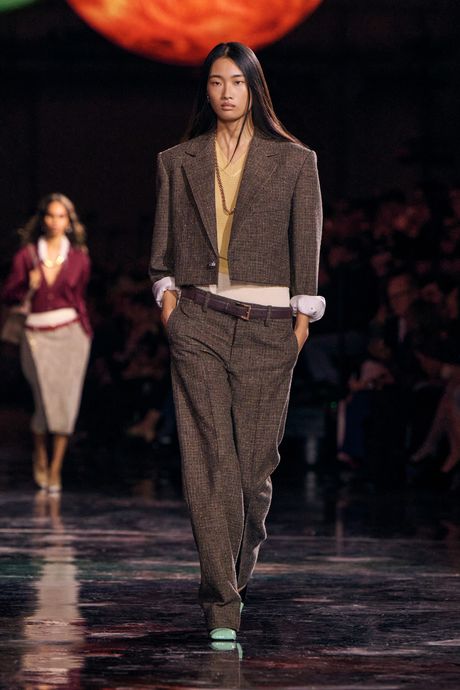
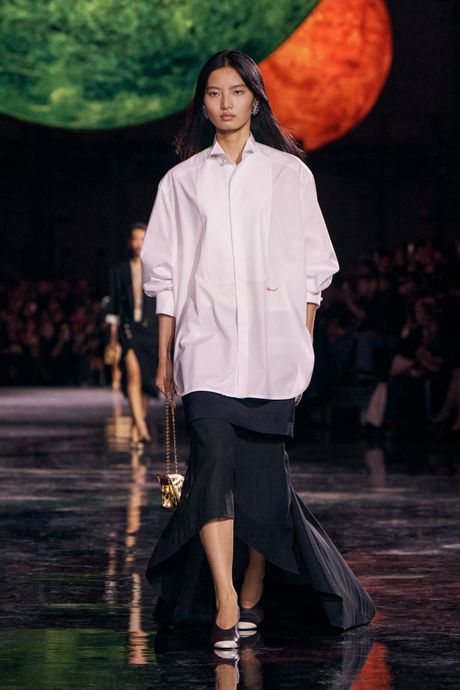
From left: Photo: Courtesy of ChanelPhoto: Courtesy of Chanel
From top: Photo: Courtesy of ChanelPhoto: Courtesy of Chanel
You also see in that segment how skirts sit off the waist with a ribbed jersey piece set above and behind the waistband. It alludes to Chanel’s original use of men’s underwear fabric. And there are fresh interpretations of her idea of practical luxe, notably a black silk-and-viscose jersey V-neck with a silk split skirt, one of my favorite looks in the whole show. Indeed, there are so many ways into this collection for different ages and lives.
Photo: Courtesy of Chanel
Another important element in her story that Blazy tackled was genre pauvre, as Flanner summed up the working-class styles that Chanel borrowed, like fisherman’s tunics and maid’s white collars. Blazy’s way in, at least to start, was through Westminster’s affection (or affectation) for well-worn clothes. There are some extraordinary styles that use fraying, including a simple, round-necked black silk dress with a picked hem and barely visible under-layer in a common dirty-white woven fabric. The dress is lightly adorned with golden stems of wheat. There’s also a fantastic suit and a coat made of cloth that resembles burlap with frayed hems and delicate embroidery in the same natural tan color. Blazy calls them “scarecrows” for their silhouette as well as their broken texture. Referring to genre pauvre, he said, “I have other ideas I want to go further with.”
Photo: Courtesy of Chanel
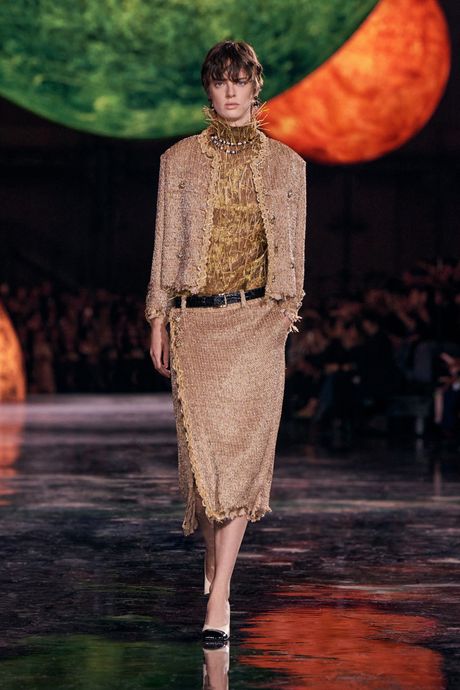
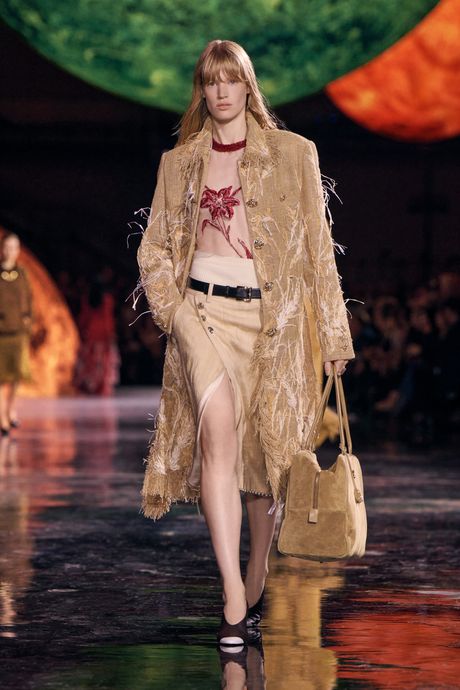
From left: Photo: Courtesy of ChanelPhoto: Courtesy of Chanel
From top: Photo: Courtesy of ChanelPhoto: Courtesy of Chanel
Among the new bags is a version of the 2.55 — the classic small Chanel on a chain — that now has a flexible metal inserted between the leathers, creating a squashy object that holds its form. “It’s like a Chamberlain sculpture,” Blazy said, giving one a good squeeze.
Photo: ANNE-CHRISTINE POUJOULAT/AFP via Getty Images
Before the show, I’d been hoping that he would lighten things up at Chanel, both materially and in attitude. The collections had become heavy and old-fashioned. But how puny were my hopes, I thought, as Odhiang spun exuberantly in the center of the Palais at the show’s end. Blazy changed everything, and not just for Chanel but for fashion.
Source link
